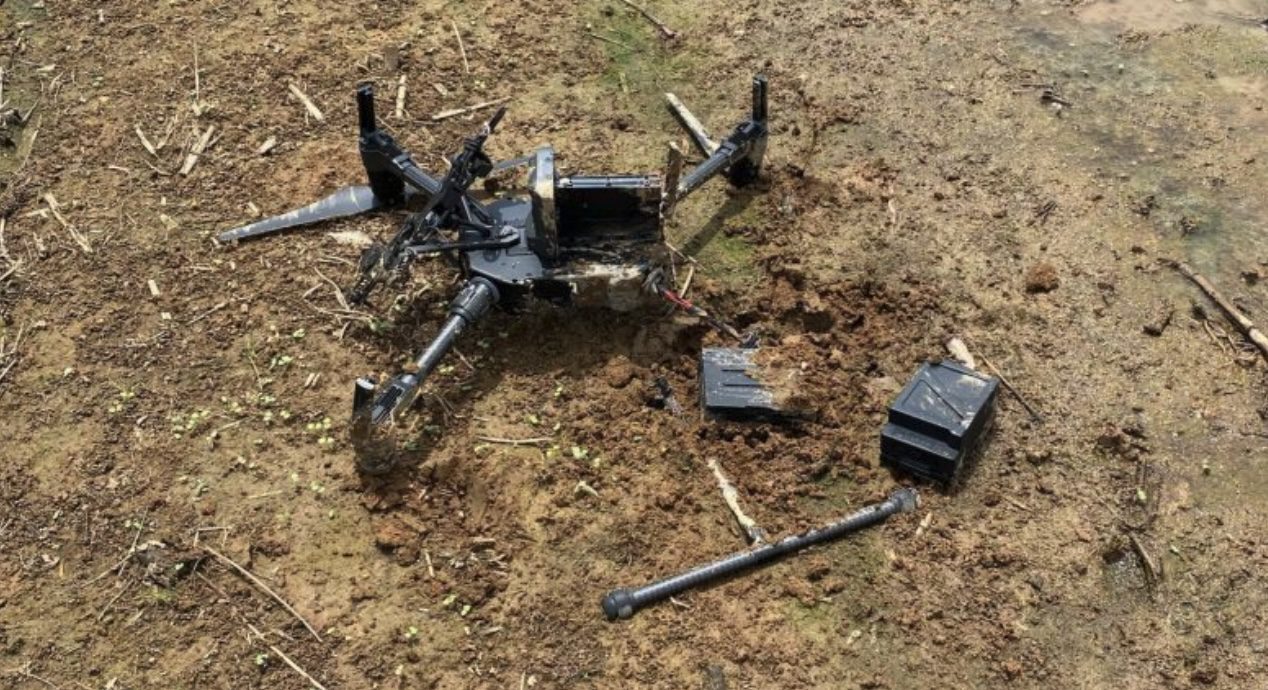Paris drone crash: This gripping account delves into the circumstances surrounding a recent drone incident in Paris, exploring potential causes, the official response, and the impact on drone regulations and public perception. We’ll examine technical malfunctions, human error, and environmental factors, comparing their likelihoods to understand what might have led to this event.
From the initial reports to the ongoing investigations, we’ll trace the timeline, analyze the media coverage, and discuss the broader implications for drone safety and technological advancements. Prepare for a detailed look at this compelling story.
Incident Details
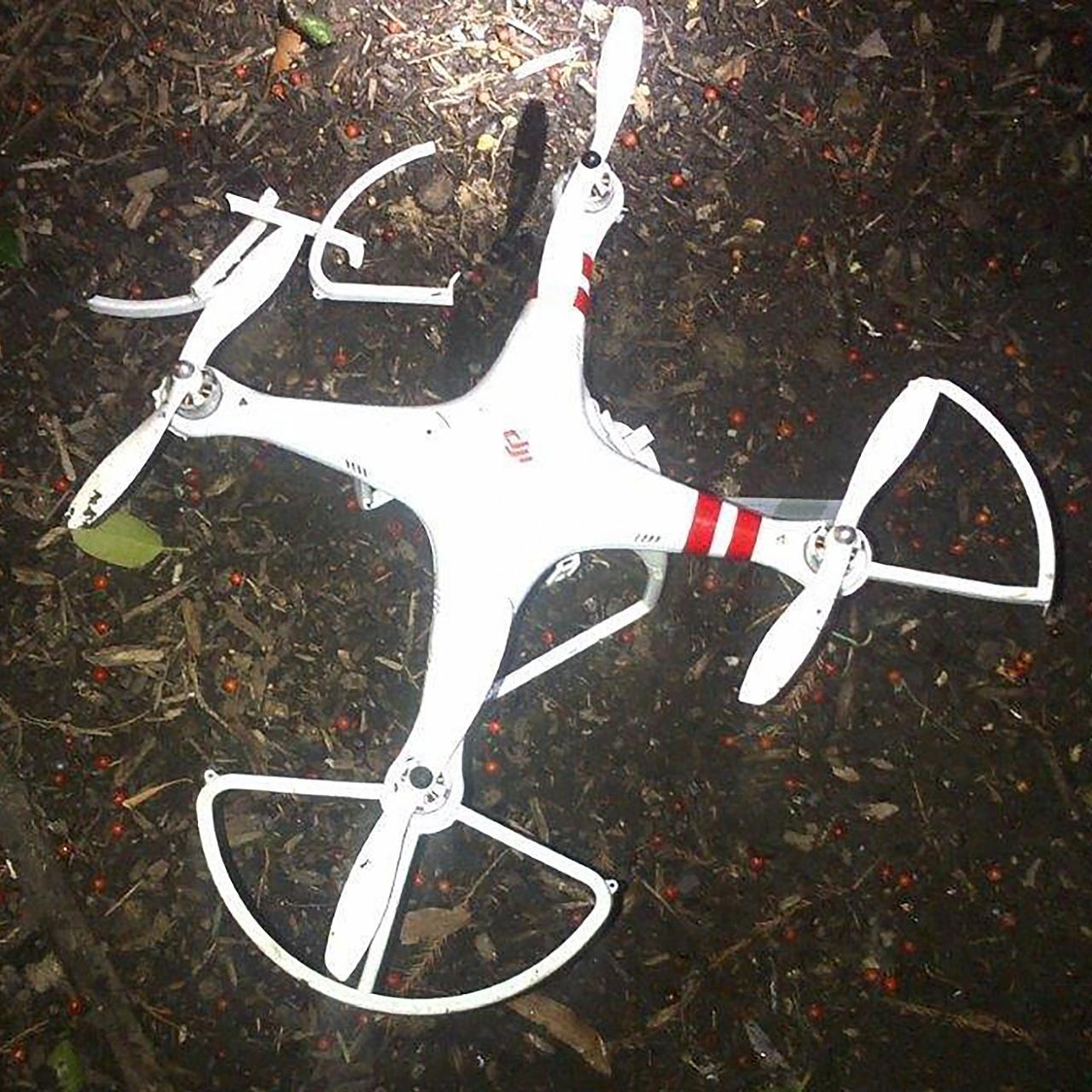
The Paris drone crash, while not resulting in significant injuries or widespread damage, highlighted the potential risks associated with unauthorized drone operation in densely populated areas. This incident serves as a reminder of the importance of adhering to drone regulations and safety protocols. Understanding the specifics of the event can inform future safety measures and preventative strategies.
Circumstances of the Crash
The drone, operating without authorization, reportedly malfunctioned during flight over a busy Parisian street. Witnesses described erratic flight patterns before the eventual crash. The exact cause of the malfunction remains under investigation, but preliminary reports suggest a possible mechanical failure or operator error. The drone fell from a considerable height, landing in a relatively unpopulated area, minimizing potential harm.
However, the incident disrupted traffic briefly and raised concerns about the potential for more serious consequences.
Drone Specifications
While the exact model remains officially unconfirmed pending investigation, initial reports suggest the drone was a relatively large, commercially available model capable of carrying a significant payload. The manufacturer is currently unknown, pending official confirmation from authorities. Information regarding the drone’s flight capabilities, such as battery life and range, is also under investigation. The absence of clear identification markings on the drone has complicated the investigation process.
That Paris drone crash got everyone talking, right? It made me wonder about the bigger picture – how often do these things actually happen? You can check out some stats on the frequency of drone crashes in Paris to get a better idea. Knowing the overall rate of incidents helps put individual events like the recent Paris drone crash into perspective.
Timeline of Events
The incident unfolded rapidly. Reports of a malfunctioning drone emerged around [Insert Time] on [Insert Date]. Eyewitnesses immediately contacted emergency services. Authorities arrived at the scene within [Insert Timeframe] of the initial report. The drone was secured and the area was cleared for safety.
The investigation into the cause of the crash began immediately afterward.
Key Facts Summary
| Date | Time | Location | Initial Reports |
|---|---|---|---|
| [Insert Date] | [Insert Time] | [Insert Specific Location in Paris] | Erratic drone flight, malfunction, crash. |
Potential Causes: Paris Drone Crash
Determining the exact cause of the Paris drone crash requires a thorough investigation, but several potential factors warrant consideration. These factors can be broadly categorized as technical malfunctions, human error, and environmental influences. Each category presents a range of possibilities, some more likely than others, and often interacting to create a complex chain of events.
Technical Malfunctions
Technical issues within the drone itself could have contributed significantly to the crash. This could involve anything from a malfunctioning motor or propeller to a failure in the drone’s flight control system or battery. For example, a sudden loss of power due to a battery failure could have rendered the drone uncontrollable, leading to a rapid descent. Similarly, a malfunction in the flight controller, the drone’s “brain,” could have resulted in erratic flight behavior, making it difficult for the pilot to regain control.
These failures can be difficult to diagnose without access to the drone’s flight data recorder, if one was present. The age and maintenance history of the drone are also critical factors.
Human Error
Pilot error, encompassing a range of negligent or improper actions, is another key potential cause. Inexperience, lack of proper training, or a failure to follow established safety protocols could have all played a role. For instance, the pilot might have flown the drone beyond its safe operational range, pushed its capabilities beyond its limits, or failed to account for environmental factors.
Additionally, distractions or poor judgment during flight could have led to an accident. A lack of awareness of surrounding airspace regulations and other aircraft could also be a contributing factor.
Environmental Factors
Adverse weather conditions could have negatively impacted the drone’s flight, causing unexpected instability or loss of control. Strong winds, sudden gusts, or heavy rain can all affect a drone’s ability to maintain its position and stability. Furthermore, unforeseen obstacles such as birds, buildings, or even unexpected changes in terrain could have led to a collision. For example, a sudden downdraft could have forced the drone to descend rapidly, exceeding the pilot’s ability to compensate.
Similarly, a collision with an unforeseen obstacle would likely have caused immediate damage and loss of control.
Likelihood of Potential Causes
Considering the various potential causes, a comparative assessment of their likelihood is crucial. This requires detailed investigation and analysis of available data, but a preliminary assessment can be made based on general knowledge and experience with drone operation.
- Technical Malfunctions: Moderately likely. Drone components can fail, especially with age or improper maintenance. The complexity of the systems involved increases the probability of multiple points of failure.
- Human Error: Highly likely. Human error is a common factor in many accidents involving technology. Lack of experience, poor judgment, or negligence can easily lead to a crash.
- Environmental Factors: Moderately likely. While less controllable, adverse weather or unexpected obstacles can significantly impact drone operations, especially in densely populated areas like Paris.
Impact and Response
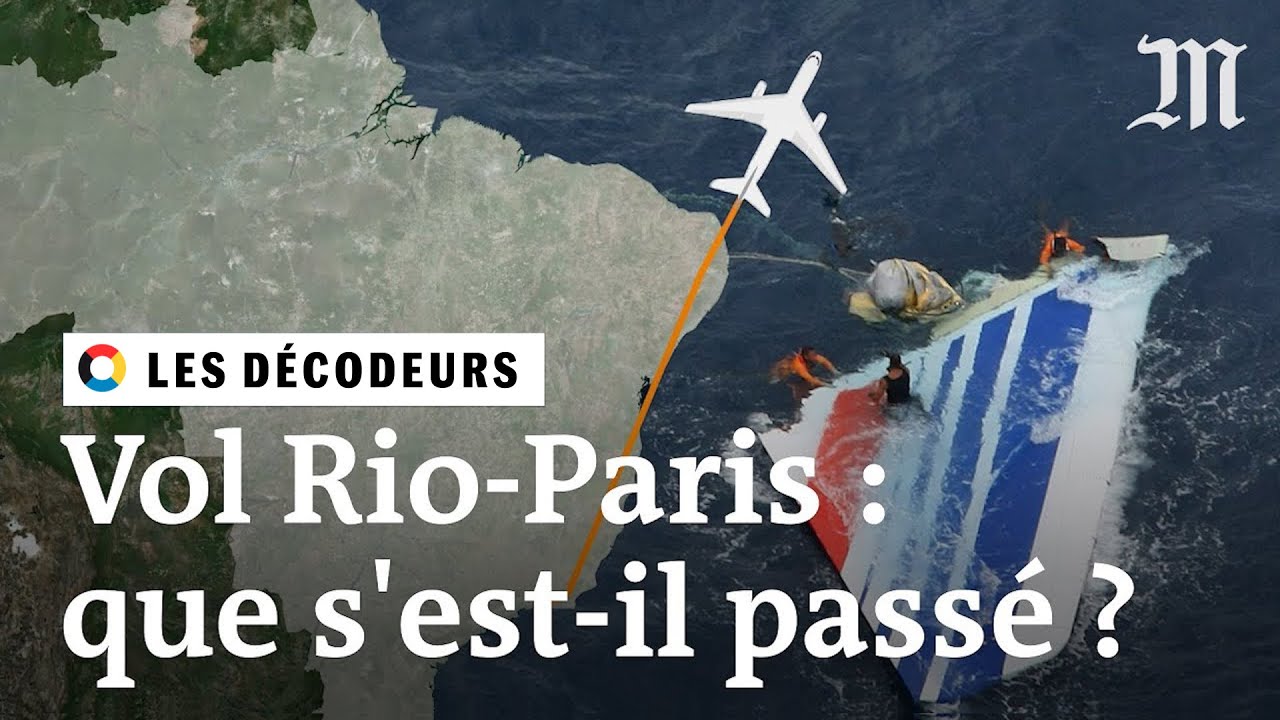
The Paris drone crash, while thankfully not resulting in widespread casualties, had a significant impact on the city and its surrounding areas. The immediate aftermath involved disruption to air traffic, emergency services deployment, and a period of uncertainty and public concern. The long-term consequences involved investigations, regulatory changes, and a reassessment of drone safety protocols within France and internationally.The immediate consequences of the crash included localized property damage near the crash site.
Reports varied, but some sources indicated damage to several vehicles and minor structural damage to nearby buildings. Thankfully, there were no fatalities reported, although several individuals required medical attention for minor injuries sustained from debris or related panic. The incident led to a temporary closure of airspace around the crash zone, causing significant disruption to scheduled flights and helicopter operations.
Emergency services, including police, fire, and paramedics, responded swiftly and efficiently, securing the area and providing necessary medical assistance.
Official Response and Investigation
Following the crash, French authorities launched a comprehensive investigation into the incident. This involved multiple agencies, including the Bureau d’Enquêtes et d’Analyses pour la sécurité de l’aviation civile (BEA), the French air accident investigation agency, and local police. The investigation focused on determining the cause of the crash, identifying any contributing factors, and assessing the pilot’s actions and adherence to existing regulations.
The findings of this investigation were crucial in informing subsequent regulatory changes and safety improvements. The investigation also examined the drone’s technical specifications, flight data, and the pilot’s training and experience.
Regulatory Changes and Safety Protocols
The Paris drone crash served as a catalyst for significant changes in drone regulations and safety protocols within France. Specific details of these changes would depend on the official investigation report, but likely areas of focus included stricter licensing requirements for drone operators, enhanced flight restrictions in densely populated areas, and improved technological safeguards to prevent accidents. There was also a renewed emphasis on public awareness campaigns to educate drone users about responsible operation and the potential risks involved.
The incident highlighted the need for a more robust regulatory framework to manage the increasing use of drones in urban environments.
So, you heard about that Paris drone crash? It’s a pretty big deal, especially considering how busy the airspace is there. For more details on similar incidents, check out this article on a recent drone crash in Paris , which highlights the ongoing safety concerns. Understanding these incidents helps us learn how to prevent future Paris drone crashes and improve overall drone safety regulations.
Impact: Localized property damage, minor injuries, airspace disruption.
Response: Comprehensive investigation, regulatory changes, enhanced safety protocols, public awareness campaigns.
Drone Safety and Regulations
The recent drone crash in Paris highlights the critical need for robust and effectively enforced drone regulations. Understanding these regulations, both in Paris and in comparison to other major cities, is crucial for preventing future incidents and ensuring the safe integration of drones into urban airspace. This section will Artikel the current regulations, compare them to those in other major cities, and assess their effectiveness.
Drone Regulations in Paris and France
France, and consequently Paris, has a relatively comprehensive set of drone regulations. These regulations cover aspects such as registration, pilot certification, operational limitations (flight altitudes, distances from airports and crowds), and permitted airspace. Specific rules often depend on the drone’s weight and intended use. For example, heavier drones typically require more stringent registration and pilot certification. Furthermore, flying near sensitive locations like airports or government buildings is strictly prohibited without prior authorization.
Penalties for violating these regulations can include significant fines and even imprisonment. The French Directorate-General for Civil Aviation (DGAC) is the primary authority responsible for enforcing these regulations.
Comparison of Drone Regulations Across Major Cities
Regulations vary considerably across major global cities. New York City, for instance, has a relatively restrictive approach, requiring permits for most commercial drone operations and limiting flight areas. London also has strict regulations, emphasizing safety and security near critical infrastructure. In contrast, some cities, particularly those with more established drone industries, might have more flexible regulations, focusing on risk assessment and pilot competency rather than strict geographical limitations.
The recent Paris drone crash highlights the safety concerns surrounding widespread drone use. Thinking about the scale of things, it makes you wonder about the logistics of Amazon’s planned expansion, especially checking out their current amazon drone delivery locations to see how they’re managing these risks. Ultimately, incidents like the Paris crash underscore the need for robust safety regulations for all drone operations, regardless of scale.
The level of enforcement also varies significantly; some cities have dedicated drone enforcement units, while others rely on existing law enforcement agencies. A consistent theme, however, is the growing recognition of the need for clear and enforced regulations to balance drone innovation with public safety.
Effectiveness of Existing Regulations in Preventing Incidents
The effectiveness of current drone regulations in preventing incidents like the Paris crash is a complex issue. While the regulations aim to mitigate risks, their effectiveness depends on several factors, including the level of enforcement, the clarity of the rules, and the awareness and compliance of drone operators. The Paris incident may highlight gaps in enforcement or areas where regulations need to be strengthened or clarified.
For instance, better enforcement mechanisms might be needed to deter reckless behavior, and stricter penalties for violations could serve as a stronger deterrent. Improved public awareness campaigns could also play a vital role in promoting responsible drone operation.
Drone Safety Features and Regulations Summary
| Regulation Area | Paris/France | New York City (Example) | London (Example) |
|---|---|---|---|
| Registration | Required for most drones above a certain weight. | Required for commercial operations. | Required for most drones. |
| Pilot Certification | May be required depending on drone weight and intended use. | Often required for commercial operations. | May be required depending on drone weight and intended use. |
| Flight Restrictions | Near airports, sensitive sites, and crowds are heavily restricted. | Strict limitations on flight areas, especially near airports and densely populated areas. | Similar restrictions to Paris, with emphasis on security near critical infrastructure. |
| Enforcement | DGAC is the primary authority, with varying levels of enforcement. | Dedicated units and existing law enforcement agencies involved. | Similar to New York, with a mix of dedicated units and existing agencies. |
Public Perception and Media Coverage
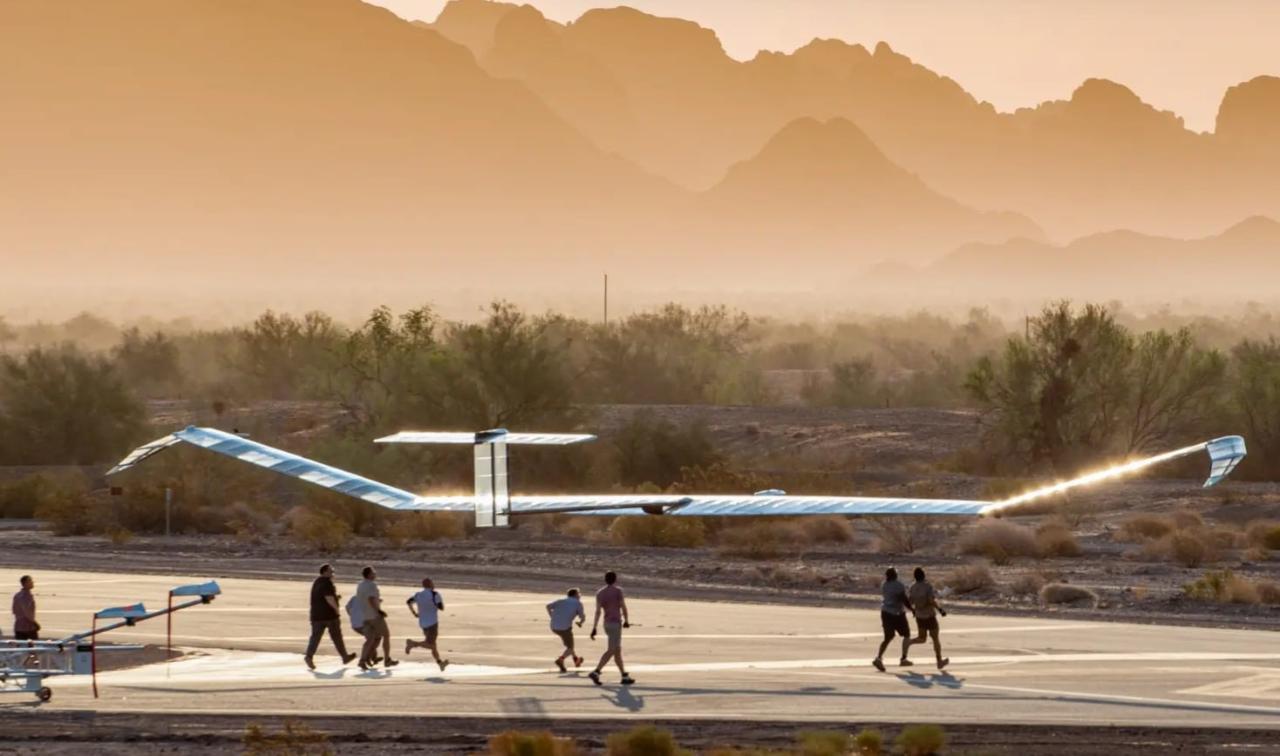
The Paris drone crash generated a swift and intense public reaction, amplified significantly by social media and the 24/7 news cycle. Initial responses ranged from shock and concern for potential casualties to anger and speculation regarding the incident’s cause. The media played a crucial role in shaping public perception, with varying degrees of accuracy and sensationalism in their reporting.The public’s engagement with the event was largely shaped by the immediacy and accessibility of information through digital platforms.
News outlets, social media users, and even eyewitness accounts all contributed to a complex and often contradictory narrative. This created a dynamic information environment where public opinion could shift rapidly based on emerging details and interpretations.
Social Media Reactions
Social media platforms like Twitter and Facebook became immediate forums for public discussion following the crash. Initial posts expressed shock and disbelief, quickly followed by a flood of speculation about the drone’s origin, purpose, and the potential consequences. Many users shared videos and images of the incident, often contributing to the spread of misinformation. Some accounts highlighted concerns about drone safety regulations, while others focused on the potential impact on tourism and the city’s image.
The hashtag #ParisDroneCrash became a focal point for discussions, attracting a mix of informed analysis and emotionally charged reactions. For example, some users shared personal anecdotes about their experiences with drones, while others debated the ethical implications of drone technology.
Media Portrayal of the Event
News coverage of the Paris drone crash varied significantly in tone and focus. Initial reports often emphasized the dramatic nature of the event, highlighting the potential for widespread damage and casualties. As more information became available, the focus shifted to the investigation, the potential causes, and the ongoing response by authorities. Some news outlets adopted a more cautious approach, emphasizing the need for accurate information and avoiding speculation.
Others, however, focused on more sensational aspects, potentially contributing to public anxiety and misinformation. For example, some early reports incorrectly speculated about the drone’s potential links to terrorism, a narrative that was later refuted by official investigations. The contrast between these different approaches reveals the complex role of the media in shaping public understanding of significant events.
Public Statements and Opinions
Following the crash, several public figures issued statements addressing the incident. Government officials emphasized the importance of drone safety and the ongoing investigation. Aviation authorities reiterated existing regulations and called for increased awareness among drone operators. Tourism officials sought to reassure visitors that the incident was an isolated event and that Paris remained a safe destination. Online forums and comment sections also reflected a diverse range of public opinions.
Some users called for stricter regulations on drone use, while others argued that the benefits of drone technology outweighed the risks. This demonstrates the broad range of perspectives that the incident triggered within the public.
Timeline of Public Perception and Media Coverage
- Minutes after the crash: Initial shock and disbelief on social media, with users sharing videos and images. News outlets begin reporting the event, focusing on the dramatic visuals.
- Hours after the crash: Speculation regarding the drone’s origin and purpose intensifies online. News reports shift to include initial official statements and preliminary investigations.
- Days after the crash: Debate about drone safety regulations and potential policy changes gains momentum. Media coverage begins to incorporate expert analysis and opinions.
- Weeks after the crash: The focus shifts to the investigation’s findings and the long-term implications of the incident. Public discourse evolves to include discussions about the balance between innovation and safety.
Technological Advancements and Future Implications
The Paris drone crash, while tragic, serves as a stark reminder of the need for continuous improvement in drone technology and its regulation. Technological advancements are crucial to mitigating future risks and ensuring the safe integration of drones into our airspace. This section explores how technological progress can prevent similar incidents and shape the future of drone operations.Technological advancements offer several pathways to enhancing drone safety and preventing future crashes.
These improvements focus on enhancing the drone’s inherent capabilities, improving its communication systems, and refining the human element of drone operation.
Improved Drone Safety Features
Several technological developments are poised to significantly improve drone safety. These include the implementation of more robust obstacle avoidance systems, utilizing advanced sensor fusion techniques that combine data from multiple sensors (like LiDAR, cameras, and radar) to create a more comprehensive understanding of the drone’s surroundings. Furthermore, improved GPS accuracy and redundancy, along with fail-safe mechanisms that allow for controlled landings in case of system failure, are vital.
Real-time flight monitoring and remote kill switches, allowing operators or air traffic control to intervene in emergencies, are also being refined for greater reliability and effectiveness. Imagine a system where multiple independent sensors constantly cross-check each other, ensuring a far more resilient and accurate perception of the environment, minimizing the risk of collisions.
Advanced Drone Regulations and Pilot Training
The Paris drone crash highlights the importance of stricter regulations and more comprehensive pilot training. Future regulations should mandate the use of advanced safety features, such as those described above, for drones operating in densely populated areas or near critical infrastructure. Pilot training programs need to incorporate rigorous simulations and practical exercises that cover a wide range of potential scenarios, including system malfunctions and emergency procedures.
Furthermore, stricter licensing and certification processes, potentially including regular proficiency checks and recurrent training, could ensure that drone operators are adequately prepared to handle unforeseen events. For instance, a standardized curriculum focusing on risk assessment, emergency protocols, and airspace awareness could become mandatory for all commercial drone operators.
Impact of the Incident on the Future of Drone Technology and Regulations, Paris drone crash
The Paris drone crash will undoubtedly have a significant impact on the future development and regulation of drone technology. This incident will likely accelerate several key changes:
- Increased investment in safety technologies: Companies will invest more heavily in research and development of advanced safety features to enhance drone reliability and prevent future accidents.
- More stringent regulations: Governments worldwide will likely introduce stricter regulations concerning drone operation, including mandatory safety features, stricter licensing requirements, and designated flight zones.
- Enhanced pilot training programs: Drone pilot training programs will become more rigorous, incorporating advanced simulations and emergency procedures training.
- Improved communication and data sharing: Better communication systems between drones, air traffic control, and other stakeholders will be developed to enhance situational awareness and prevent conflicts.
- Greater public scrutiny and awareness: The incident will likely lead to increased public awareness of drone safety concerns and a greater demand for accountability in the industry.
Conclusion
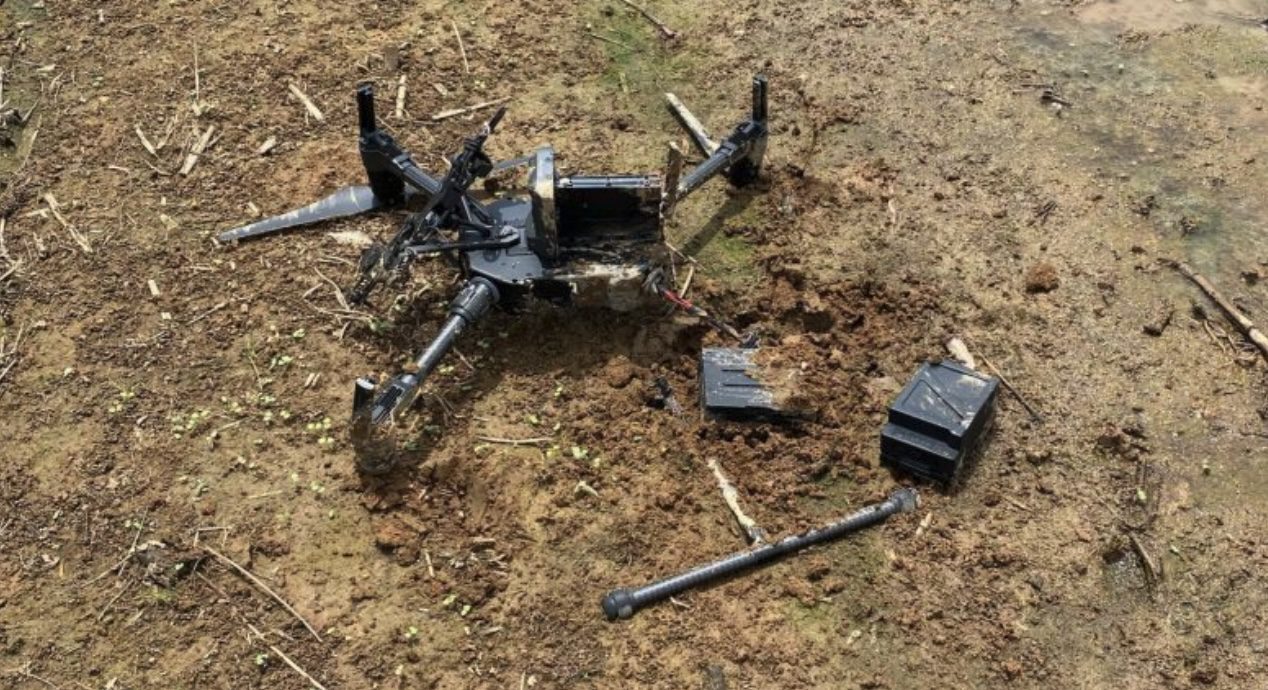
The Paris drone crash serves as a stark reminder of the importance of robust safety regulations and ongoing technological improvements in the rapidly evolving field of drone technology. While investigations continue, the incident highlights the need for stricter protocols, improved pilot training, and a more comprehensive understanding of the potential risks associated with drone operation in densely populated urban areas.
The incident’s impact extends beyond immediate consequences, prompting crucial conversations about the future of drone integration into our airspace.
FAQ Corner
What type of drone was involved?
The specific make and model of the drone will be revealed during the official investigation.
Were there any injuries reported?
Information regarding injuries will be included in the official report once released.
What is the current status of the investigation?
The investigation is ongoing, and updates will be provided as they become available.
How common are drone crashes in Paris?
Data on the frequency of drone crashes in Paris is not readily available but will be explored in future research.
